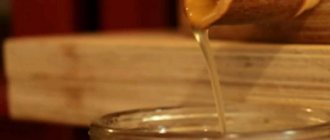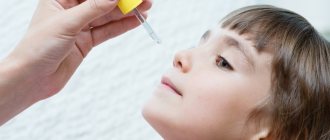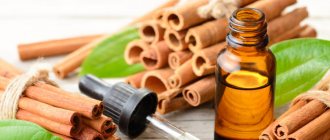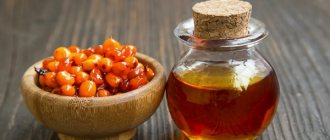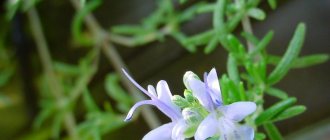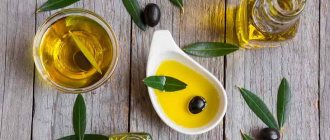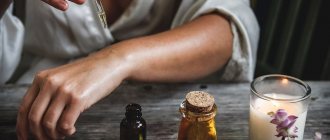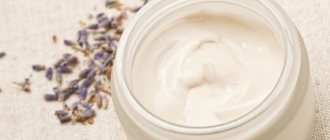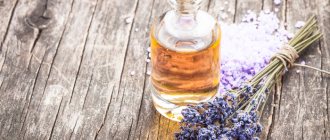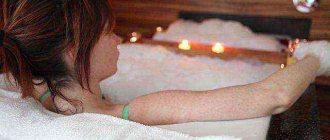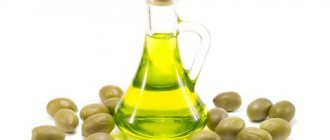This is my article published a year ago in the Aromatherapy Journal. I hope it will be of interest to parents of small and large children. The pastel work illustrating this article is also by me...
Source: Bulletin No. 6 // Interregional Public Organization “League of Professional Aromatherapists, Herbalists and Naturopaths” // Ed. Sakova I.V. - St. Petersburg: LLC Publishing House "LEMA", 2010
The use of essential oils in pediatric practice is determined by the following reasons:
- powerful bacteriostatic and bactericidal effect of essential oils;
- relatively low toxicity, harmlessness;
- wide range of therapeutic action.
In children of the first three years, the adsorption and release of any product occurs much more intensely than in older children. Increased permeability of the skin and mucous membranes in infants requires special care when applying essential oils to the surface of the body. Essential oils of mint, lavender, sage, fennel, thyme, tea tree, rose and a number of others have proven themselves well in pediatrics.
To create oil compositions for children, base oils are used: sunflower, olive, apricot, almond, jojoba, wheat germ, rose hip, and calendula.
Recommended dosages of essential oils for children of different ages.
From birth to one year (infancy): 1 drop of essential oil per 2 tablespoons of base oil (boiled and cooled) for massage; 1 drop of essential oil per 1 tablespoon of vegetable oil for rubbing; 1 drop of essential oil per 1 glass of water for a compress; 1 drop of essential oil per bath (from 3 months).
From one to 5 years (younger preschool age): 1-2 drops of essential oil per 0.5 tablespoons of base oil for massage; 2 drops of essential oil per bath.
From 5 to 12 years (senior preschool age and junior school age): 2-3 drops of essential oil per 0.5 tablespoon of base oil for massage; 3-4 drops of essential oil per bath.
Over 12 years old (teenagers): 3 drops of essential oil per 0.5 tablespoons of base oil for massage; 4-5 drops of essential oil per bath.
Aromatherapy against hyperactivity
Excessive hyperactivity
- the first alarm bell that parents must pay attention to. Whatever the root causes of this phenomenon, you can quickly cope with a child’s nervousness and excitability using Lavender and Roman Chamomile essential oils. The oils of these medicinal plants have a beneficial calming effect on the fragile psyche of the baby.
A relaxing massage after water procedures using an EO mixture will calm your child and help him fall asleep. To prepare the mixture, you need to mix and dissolve 3 drops of Lavender and Roman Chamomile essential oils in 15 ml of Apricot, Macadamia or Jojoba seed oil. This composition can be used as a massage oil and as a bath fragrance (add 3-4 drops of the mixture to warm bathing water).
Aromatherapy for children from birth to one year.
At this age, massage of a child is very useful for his development and rapprochement with his parents. Massage sessions are provided daily after bathing. Do a light massage and stroking. In order to create physical contact with a child and let him feel your care, you do not have to be a professional massage therapist. Use aromatic massage oil prepared according to the following recipe:
- 100 ml almond oil (or 80 ml almond oil and 20 ml jojoba oil);
- 2 drops each of Roman chamomile, rose, neroli or lavender essential oil (or 1 drop each of rose and Roman chamomile).
Do not exceed the specified dosage!
A child should be given a massage when he is happy, healthy and cheerful. The massage room should be warm. There should be no jewelry on your hands. 10 minutes of massage is enough to achieve the effect. Stay in contact with your child: laugh, talk, sing to him.
Do not massage your child's hands as the essential oil may get into the mouth.
Essential oils should never be given orally to infants.
Colic or infantile cramps are a painful accumulation of gases in a child. In this condition, healthy babies between 6 and 14 weeks of age begin to cry for a long time at night, and nothing can calm them down. In 1989, Dr. Jan-Helge Larson showed that abdominal massage helps in this case. And it doesn’t matter whether it is carried out through clothing or directly on the naked body. He identified several reasons for this condition: from insufficient gas production to a sense of parental insecurity passed on to the child.
For colic, lightly massage the abdomen in a clockwise circular motion. Use the following oil composition: 1 drop of tangerine, Roman chamomile or dill essential oil to 2 tablespoons of base oil.
A compress will also help: dilute 1 drop of Roman chamomile essential oil in 1 glass of water, stir well, soak a piece of flannel fabric, and place it on the child’s stomach.
When treating constipation in children older than two months, use the following massage mixture: add 1 drop each of orange and rosemary essential oils to 3 tablespoons of olive oil. Massage your baby's belly in a clockwise direction.
In this case, you can also use folk remedies:
- 5-6 times a day, give 0.5 teaspoon of dill water - 1 teaspoon of dill seeds per 0.5 glass of water, brew in a water bath;
- Give 1 teaspoon of cumin water 5-6 times a day - take 1 tablespoon of cumin fruits, pour 1 glass of boiling water, cook for 5-10 minutes, cool;
- Give a teaspoon of weak chamomile infusion 5-6 times a day.
For diarrhea in children older than two months, use 1 drop each of ginger and lemon oil in a compress: dilute essential oils in a glass of water, mix well, blot a piece of cloth, place the cloth on the stomach.
Or dilute the same amount of oils in 3 tablespoons of olive or sunflower oil and massage the baby’s belly clockwise.
Seborrheic crusts on the scalp can be cured by lightly massaging the head with an oil mixture: thoroughly mix 1 drop of geranium essential oil in 1 tablespoon of almond oil or jojoba oil. Use daily until complete recovery.
You can make baby shampoo medicinal. To do this, add 1-2 drops of tea tree essential oil to 50 ml of shampoo. Shake shampoo well before use. Apply a small amount of shampoo to your child's head. Try to keep shampoo foam out of your child's eyes. Thoroughly rinse the foam from your head. Use shampoo for a week.
Difficulties falling asleep and anxiety are eliminated by adding 1 drop of lavender or Roman chamomile essential oil to the aroma lamp. Pour hot water into the recess of the aroma lamp, add essential oil, place a lit candle inside the aroma lamp, and scent the room for 30 minutes when the child is not in the room.
For diaper rash, use a scented cream for the affected skin: 1 drop of lavender essential oil per 15 g of cream.
An oil mixture is prepared to cleanse the skin. For children under two months - add 2 drops of neroli or rose essential oil to 2.5 tablespoons of olive or apricot oil. After two months, you can add 1 drop of bergamot and 2 drops of lavender or patchouli essential oil.
You can use flavored water to wash your baby: add 1 drop of lavender (or Roman chamomile, yarrow) essential oil to 0.5 liters of warm water and shake thoroughly.
For diaper rash, use 2 drops of sandalwood essential oil dissolved in 0.5 cups of kefir or milk (or other emulsifier) for a bath. Or use an infusion of string, chamomile - 1 tablespoon of string herb (or chamomile flowers), pour freshly boiled water, leave for 40 minutes, strain, add to the evening bath. A bath with herbs can be used every day even with healthy skin - to prevent skin diseases and restore the skin from micro-wounds.
In folk medicine, sunflower oil boiled in a water bath is used to treat diaper rash, burns, wounds and cracks in the skin of infants.
For diaper rash, the first thing to do is change diapers more often. Don't leave your baby in dirty diapers. Keep your child without them as much as possible. Avoid using chemically scented wipes. To cleanse the skin, use jojoba or calendula oil, boiled sunflower oil.
Cream for diaper rash: add 2 drops each of Roman chamomile and lavender (or yarrow) essential oil to 50 g of baby cream. If your doctor thinks the rash is due to thrush, add 4 drops of tea tree essential oil instead of these essential oils. Use a little cream twice a day. If irritation occurs, stop using it.
As an additional method, a bath is used for children from 3 to 6 months: add 1 drop of lavender (or Roman chamomile) essential oil to 1 tablespoon of full-fat milk. For children older than 6 months, you can use 1 drop of tea tree essential oil.
Teething is made easier in the following way. For a child over 6 months old, prepare massage oil: add 1 drop of lavender or Roman chamomile oil to 5 tablespoons of almond oil. Mix everything well. Apply no more than two drops of the oil mixture to the child's gums with your finger or cotton swab. Massage the face opposite the cutting tooth, along the jaw line towards the child's ear. Do not rub near the eye or mouth!
Preventive aromatherapy sessions during the cold season. Recommended methods: baths, aroma lamp, massage. For babies from two weeks to two months, essential oils are suitable: eucalyptus, lavender, neroli, rose. For babies over two months: bergamot, fennel, lavender, ginger, orange, patchouli, petitgrain, rosemary, sandalwood, ylang-ylang.
Carry out preventive procedures no more than 2-3 times a week. Use no more than 2 drops in the aroma lamp. The source of evaporation of essential oils should be no closer than 50 cm from the child’s face.
For coughs and colds, scent the children's room with essential oils of tea tree, cajeput, lavender or eucalyptus using an aroma lamp. Use 1 drop of essential oil in an aroma lamp.
Instead of an aroma lamp, you can place a cup of hot water with 1 drop of any of the indicated essential oils next to the crib.
For a runny nose, aromatizing the air in the child's room with 1-2 drops of lemon, eucalyptus, lavender or tea tree essential oil will help.
Folk remedies for runny nose in infants:
- Heat table salt in a frying pan until warm brown, pour it into a canvas bag and apply it to the bridge of the child’s nose.
For bronchitis in infants, use 1-2 drops of lavender essential oil in an aroma lamp.
Breast massage with the following oil mixture can provide significant help: add 1 drop of lavender or lemon essential oil to 2.5 tablespoons of sunflower, olive or apricot oil.
How to use essential oils for newborns
Everyone loves massage and children are no exception. In addition to the healing effect, massage makes it possible to establish not only a physical, but also a psychological connection with the child. You don't have to be a massage therapist to do this. Newborns love any kind of gentle and affectionate touch. In addition to pleasant sensations, massage with essential oils stimulates blood circulation and will help get rid of colic in the tummy. A massage with essential oils will also perfectly moisturize your newborn baby's skin.
Massage oil recipe for newborns:
1 drop of chamomile;
1 drop of geranium;
Mix all ingredients together. This essential oil massage oil can be used daily for babies 3 months and older.
Baths with essential oils for newborns
To prepare a bath for a newborn, take 1-2 drops of lavender or chamomile essential oil and 20 ml of milk (milk helps emulate the oil), mix all the ingredients and dissolve in water. This bath will help your child calm down and fall asleep.
If your newborn baby does not sleep well, add 2 drops of chamomile to the aroma lamp. Lavender oil is also suitable for a peaceful sleep for a small child, which, in addition to its calming effect, has antiseptic and antibacterial properties.
The peculiarities of the life of a modern person lead to inexplicable fuss, during which frequent unrest, frustration, nervous tension, and breakdowns occur. This is perceived by the body as stress, which provokes depression, mental disorders, and an overall emotionally unbalanced state. Against the background of constant hassle, a lot of chronic pathologies develop, the treatment of which can last a lifetime. Trying to find at least some peace of mind, some begin to take various medications to suppress nervousness. Others prefer to reach out to nature, using essential oils that calm and strengthen the nervous system.
The use of essential oils is less dangerous than, for example, long-term use of sedatives, which have a negative effect on the brain of a child or an adult, causing addiction.
The effectiveness of aromatherapy
In fact, the first methods of treating mental disorders using the aromas of medicinal plants were noted already in ancient times. Herbs were placed in their homes in a freshly harvested state, and their natural fragrance was enjoyed. They dried and placed plant branches on the walls, under the bed. They even sewed them into pillows. The premises were set on fire and fumigated. All these manipulations allowed our ancestors to safely cope with anxiety and fear, eliminating the consequences of stress, sadness and despair. Get rid of insomnia and anxiety. Gain confidence in yourself, your actions and decisions.
Today, many people also operate using such primitive methods, but less often. Aromatherapy has become widely popular, with people using soothing essential oils that can have both a calming and energizing effect on the nervous system. Stimulating a person to take action, or vice versa, slightly slowing down increased activity. Scientists have actually been saying for a long time that such substances are capable of influencing a person’s emotional state selectively – they will calm some people down and, on the contrary, they will excite others; in other words, they will bring order to an abnormal state of mind. Such products are called “adaptogens.”
